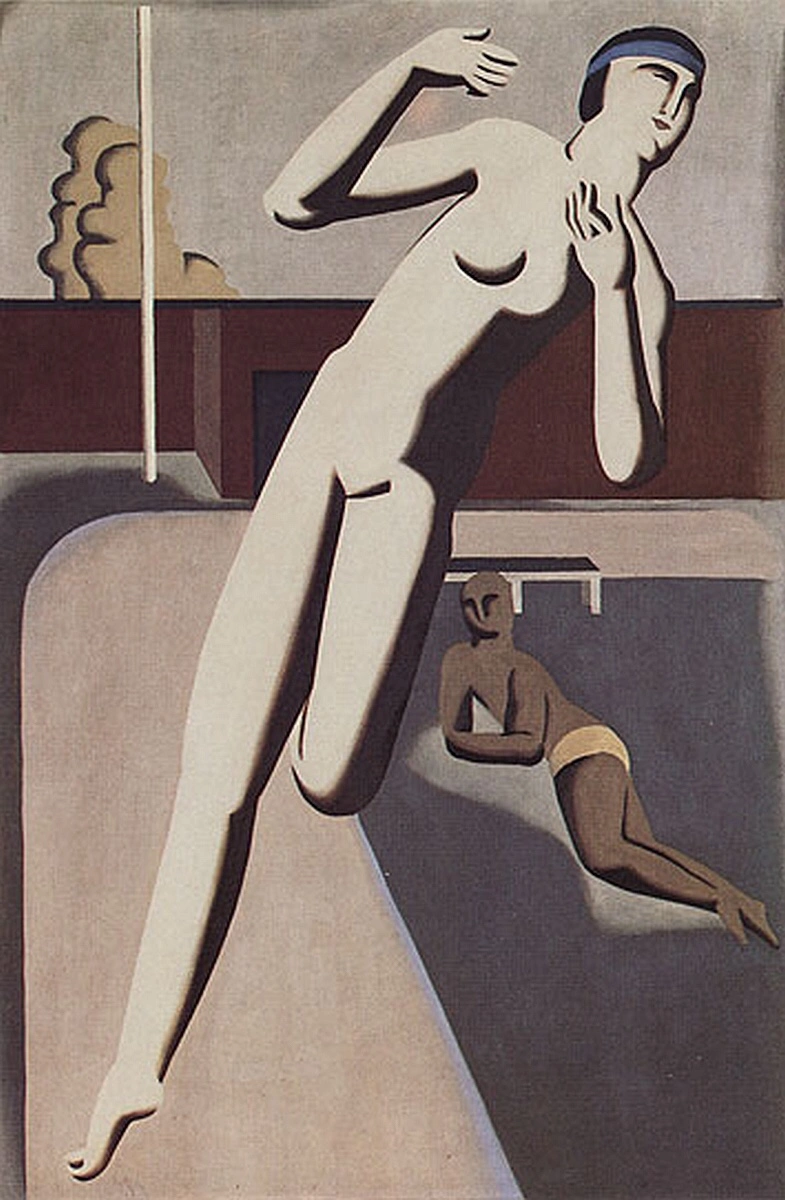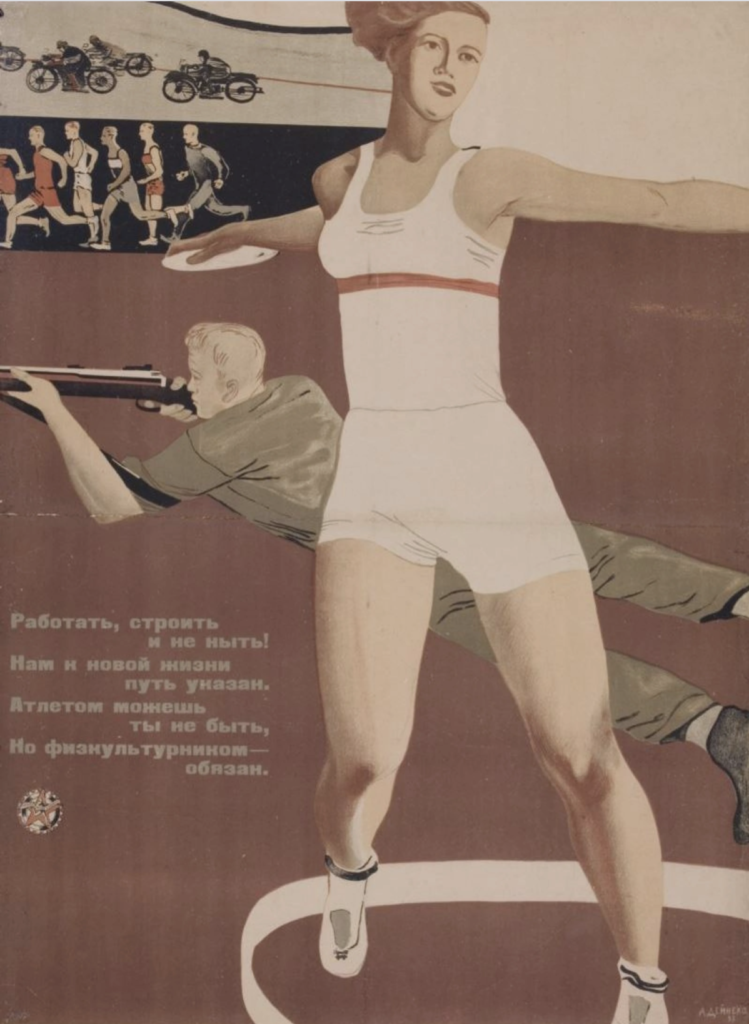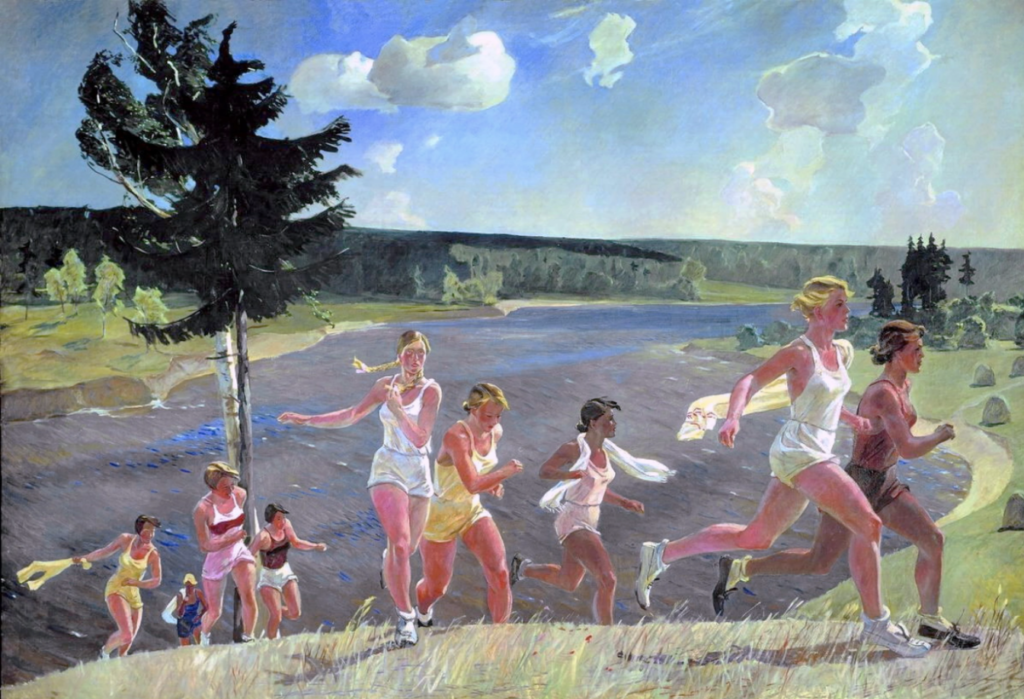Skiing in Art History
Artists have long captured the magic of snow. During the 19th century, when winter sports like skiing, skating, and sledding became more popular in...
Louisa Mahoney 31 January 2024
In the annals of history, sport has predominantly been perceived as a male endeavor, a bias that art’s historical narrative often mirrors. Yet, within this context, a handful of artworks stand as exceptions, portraying a departure from the norm by depicting women actively engaged in sports.

In Manet‘s painting, The Croquet Game, we see a number of women playing croquet while a male figure in the far right of the painting observes the women. Originating in England, croquet involves hitting a wooden ball with a mallet. The goal is to hit the ball to go through the hoops. The French Modernist painter captures beautifully the summer sport. You can see more paintings of similar sports here.
Although women are playing a sport in the painting, the impression of a leisurely game is given. Although Manet shows women involved, there is no sense that this is a competitive or skilled sport. In fact, we get the impression that it is a laid-back and casual game. This returns to the idea that competitive sports were for men, instead.

Roughly ten years later, Irish painter Sir John Lavery painted a woman more actively participating in a game of tennis. Furthermore, he painted her playing against a male opponent. The two of them are observed, amidst the action, by a female sitting under a parasol and a standing male figure.
The energetic and dynamic pose of the female is juxtaposed with her constrictive clothing. The painting moves towards the concept of both men and women being involved in the same competitive sports. However, there is no sense of equality in the way that she dresses. Her opponent’s clothes are much less restrictive. It seems that she dressed in these clothes, like the other woman, to observe the game, but then decided to play instead.

In the mid-1920s, Willi Baumeister painted a nude woman running in a Cubist style. Baumeister was a German painter and designer who admired the work of Expressionists like Oskar Kokoschka and Paul Klee.
We know little about this painting. However, we see an enigmatic image of an active woman and a reclined male. It seems that the traditional roles assigned have been reversed. That is to say, normally the woman would be the observer of the sport, with the man as the participant. Yet, this in turn suggests the idea of the man as the observer and the woman as the object of art. The painting suggests a change in how artists represent women and sport.

The way that artists represented women and sport during the 1930s was dramatically different in the Soviet Union. That is to say, Socialist Realism was a style of art that defined this period of Russian history. The art displayed a glorified depiction of communist values, expressing ideas of emancipation and freedom.
As the official art form, scenes of everyday life were underlined with idealized aspects. With these paintings, the Russian people were promised a brighter future. A 2017 exhibition at the Royal Academy in London portrayed just how important these posters were, as part of a much larger propaganda.
Alexander Deineka was a key artist involved in Socialist Realism painting. For example, his poster The Activities Lady epitomizes the image of freedom and success that the government wanted to convey. The government spread images like this for the specific purpose of sending this message. The female wears sports clothes equal to her male counterparts, who run in the background. She holds a disc and is in the middle of the action.
Her athletic body projected the idea that women, like men, should become strong. The poster is forward-thinking in the sense that it shows a woman assuming a male position, the sport participant. However, these posters did not reflect reality but instead were produced to make people believe that they would have a better future.

Similarly, Deineka’s painting Expanse displays women in athletic clothing, running freely through the beautiful expanse of water and landscape. This image was also used to remind women that, like men, they too should become athletes.
However, these paintings purposefully overlook and contradict the terrible realities of the Soviet Union. But they certainly provide a unique perspective on the role of women in sports within art. Although they reflect an ideology, they certainly physically display both women and men involved in the same sports. That is to say, for perhaps the first time, they are physically encouraged to participate in male activity.
The few depictions of women involved in sport throughout art history reinforce the traditional association of sport as a masculine outlet. And yet, if we take each image for what it literally displays, we see women succeeding in sports.
Varying from pleasant images of croquet to posters of Socialist ideology, women and sport are interesting and dynamic topics. One is left to wonder how artists will paint women involved in sports in the future. Sport is certainly accepted as a female entity today too, suggesting that this will continue to be communicated in artworks as well.
DailyArt Magazine needs your support. Every contribution, however big or small, is very valuable for our future. Thanks to it, we will be able to sustain and grow the Magazine. Thank you for your help!